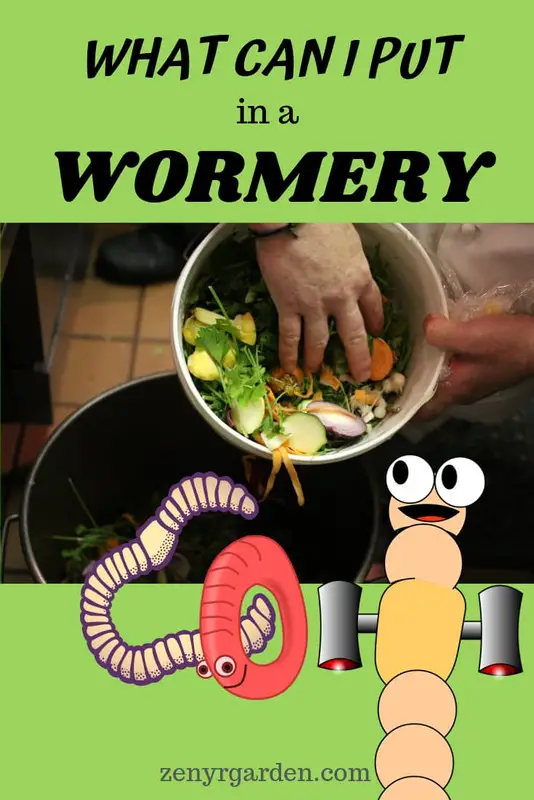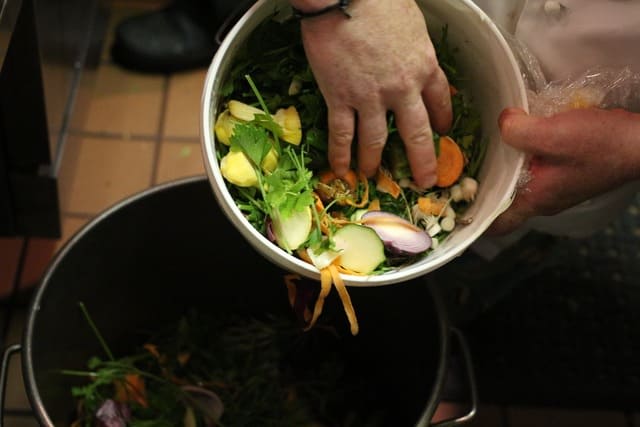Worms will be happy with kitchen scraps like banana peels, apple or lettuce that you give them. Some people don't recommend citrus fruits like oranges or grapefruits because of the terpene in the peels. Some other still use them fine.
On a basic level, the worms enjoy high-fibrous foodstuffs so veggies and fruits will be fine for them.
There are some aspects to look at to make sure the worms are happy with their food and their environment. They are very simple and let's check them out below:
#1. Some Cardboard for Air & Moisture Absorption
While dumping in the foods for your worms, it's good to layer in some shredded paper or cardboard here and there. This is so that we can create some air around the bin & the cardboard will help soak up any excess water in there.
In fact, an environment that is too wet may cause the worms to escape in search for a better place to live. So these spacers can help in this case.
Be careful with some paper cups because the inner lining of some may actually contain plastic. Non-glossy paper (not containing the plastic film coating) would be better for the worms.
Another thing we may look at is to:
#2. Add Food Gradually & Not Too Much At Once
Adding way too much food or food scraps in your wormery right from the start may overheat the bin–making it uncomfortable for the worms to live in.
In addition to that, the excess foods (which the worms may haven't touched yet) may invite other guests to the party. You know their faces, the ants, the rats and the like. And this is not what we want.
So if you're starting your wormery, start with a small amount like some slices of apples, some banana peels. Then, as your worms grow bigger or more in population we can ramp up the food amount.
For some worms like red wigglers, the amount of food can be about 1 lb (450 gram) per week. For other more voracious eaters like the African nightcrawlers, it can be somewhere from 1 lb to 3 lbs (450 gram - 1.3 kg) of food scraps per week.
If you're looking to feed the worms with some feces, then check out the third aspect which is:
#3. Feeding Worms With Manure
Worms do okay with some animal manure. In fact, manure from grass-fed animals like cow, horses, goats, rabbits can be very good for the worms. Because it contains the fibers or lignin (plant protein) that the worms enjoy.
In some worm farms, they feed them with fresh manure. It's often a good idea to compost the manure before feeding it to the worms to get rid of the smell and any pathogens though.
Cow manure after composting for about 7 days can be used to feed the worms. Pig manure, if composted & treated well, can also be a good food source.
On a household scale, it's not usually recommended to use dog or cat feces. Unless we can somehow process the feces before using, they may contain pathogens that we don't want.
So in summary, here are:
Okay stuff:
- watermelon/avocado/mushrooms (worms love these)
- moldy foods
- broccoli
- coffee grounds
- napkin
- paper
- bread (but some yeast expands abnormally in worms though)
- cardboard/Amazon boxes
- cotton swabs
- tea leaves
- composted chicken litter
- hair
No-no stuff:
- untreated pet feces
- meat/bones/diary
- onion/garlic/mustard (worms don't really like the sulfur in these)
- processed/cooked/oily foods
- plastic
- Styrofoam
Happy Worm Feeding
As you can see, feeding your worms need not be rocket science or anything too complicated. Just remember a few points like create some air flow inside your wormery.
Also, add foods gradually so the environment stays nice and cool. A good temperature for the worms is about 30C (86F) and below. Lastly, if you intend to use manure, make sure to treat it if you don't want the smell or the bad guys.
And don't forget some shade for these guys while eating. They don't like the light so covering your wormery will keep them happy. Hope this post has given you some ideas for feeding. Cheers & let's go feed your worms.
Here are some other posts you may be interested in:
Share or pin this post!


